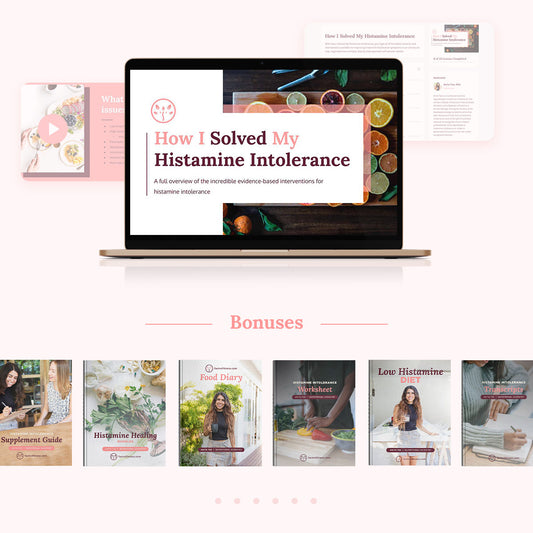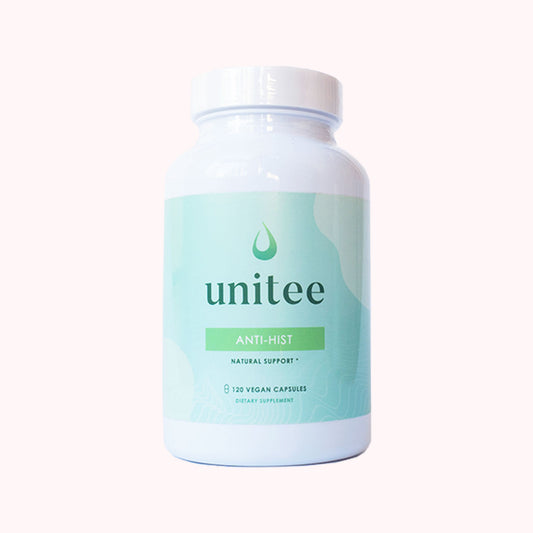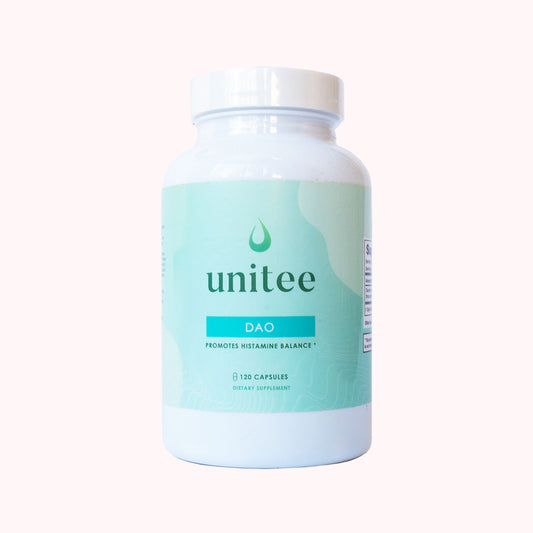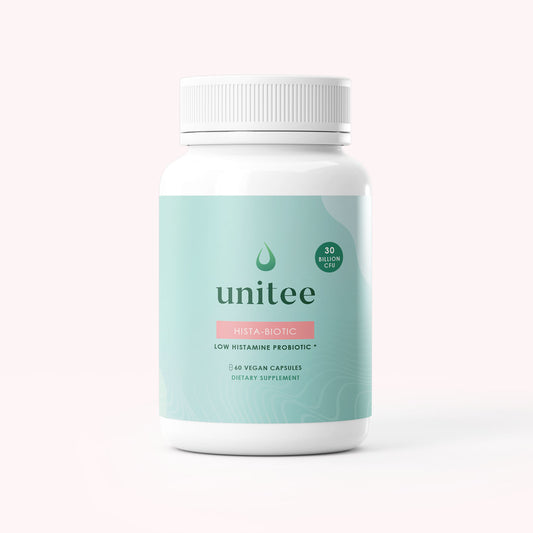Do you ever wonder the role eating has played in the development of your histamine intolerance?
For example, when you noticed you didn’t feel as well as you used to, and your symptoms started to worsen, you likely tried to focus on eating more healthy foods.
You cut out bread, pasta, dairy and that little bit of sugar you may have had on occasion, and anything else you thought could be contributing.
In their place, you probably started loading your smoothies with bunches of greens. Perhaps you started juicing. You added berries and healthy fats like avocado and nuts to your meals, and you may have even gone as far as to make homemade kefir, kombucha and pickles to heal up your gut.
This made you feel even worse, didn’t it?
Well, you’re not alone.
Like many others like you, piling your plate full of healthy foods simply pushed your body to make and release more histamine, causing your symptoms such as headaches, pain, fatigue, and hives to skyrocket.
The question is, why!? Aren’t healthy foods supposed to be good for your body? Aren’t fruit and vegetables supposed to reduce inflammation and improve health?
Of course, the answer is yes. The trouble lies in what your body does with certain compounds in some of the healthiest foods on the planet. This body imbalance is what we need to discuss…
Why Healthy Foods Increase Histamine Levels
Even though whole foods are the best choice for overall health and wellbeing, plant-based foods have a variety of compounds that are designed to protect the plants in certain environments.
Even though the human body can usually cope with these compounds under normal circumstances, if the body is not in homeostasis, or balance, these compounds can become bothersome.
In the case of histamine intolerance, it is both plant-based and animal-based foods that can be a problem as they contain histamine, histamine liberators and can even block diamine oxidase (DAO) enzymes, which are responsible for degrading histamine.
So, what does that mean, exactly? Let's define these.
Histamine: You’re well aware of this compound by now. It’s a biogenic amine in some food that contributes to the actual histamine levels in the body. Fermented and degrading foods are the best examples of histamine-containing foods. This is why kefir and kombucha as well as leftovers and ground meats may cause higher histamine levels to build up in your body (1).
Histamine liberators: Foods can be quite low in histamines themselves, but when they are combined with other foods, they can cause them to release more histamines. Additionally, they can send messages that trigger the mast cells in your own body to release their histamine contents, essentially liberating these compounds into the body. Because the lining of the digestive tract is so densely populated with mast cells, foods that liberate histamines from these mast cells can be particularly bothersome for those who are already dealing with mast cell issues. Foods to avoid that liberate histamines include tomatoes, legumes, cacao, alcohol, egg whites, citrus fruits, fish, and peanuts (2).
DAO blockers: Diamine oxidase is one of the main enzymes that breaks histamine down, allowing the body to effectively get rid of it when levels increase above the required threshold. Certain foods can block this effect and so increase the amount of histamines flowing around in the body. DAO is particularly important to histamines in the gut environment, so you can imagine that when you’re eating DAO-blocking foods, histamines are more readily absorbed into the bloodstream, causing problems throughout the body. Included in this category are things like fermented food, spinach, shellfish and as well as coffee and alcohol (3). Keep in mind, there are also foods that increase DAO enzyme production that can reduce symptoms, as well!
A Low Histamine Diet to Ease Histamine Symptoms
As we've discussed in this post, when it comes to histamine intolerance, the guideline of simply eating "healthy" (which we'll consider as natural foods which are not or minimally processed) is unfortunately not going to be the answer. You'll have to go a step further...
That’s why, when you suspect that histamines are a cause of your bothersome symptoms, the first thing to do to try to reduce the histamine load in your body, is to cut back on those foods in your diet; including those that might liberate histamine or block that all essential DAO. It's important to follow a foods list that eliminates all categories of these foods, which you can grab below for free!
Because a histamine intolerance diet is significantly lowering the influx of histamines into your system through the digestive system, histamine-related symptoms should decrease quite quickly, with an improvement typically noticed within 1-2 weeks of starting the diet.
Even if you don’t see complete resolution of your symptoms, the positive impact that following a low histamine diet can have on a suspected histamine intolerance can be quite profound. Even if it begins to help to reduce the brain fog and fatigue, it allows you to experience fewer headaches and reduces digestive upset, it’s a great start.
Need help navigating the histamine-containing, histamine-liberating and DAO blocking foods? Be sure to download the comprehensive list of foods to eat and those to avoid while you figure out whether histamines are troubling you or not.
Additionally, as mentioned above, you can focus on supporting your body’s clearance of histamines by improving your supply of the DAO enzyme. You can either take a DAO enzyme supplement alongside your meal, or you can foods to increase DAO naturally.
Lastly, many common intestinal bacteria produce histamine (4), so it's important if you're histamine intolerant to use only designated and tested low histamine probiotics, in order to ensure you're improving the status of your gut health without adding more histamine into the mix.
Remember, there’s usually an underlying cause that contributes to your issues with histamine, but knowing what to eat can be the first step in your journey to healing from histamine intolerance. Here’s wishing you well, and hoping that you find at least the first sign of relief from your histamine-associated symptoms.
References:
- Reese, I., Ballmer-Weber, B., Beyer, K. et al. German guideline for the management of adverse reactions to ingested histamine. Allergo J Int 26, 72–79 (2017).
- Backhaus B, Raithel M, Hahn EG. Nicht-immunologisch induzierte Histaminfreisetzung an vitalen menschlichen Darmschleimhautbiopsien durch Stimulation mit Polyaminen. (Nonimmunologically induced histamine release of biopsies of vital human intestinal mucosa after stimulation with polyamines.) Allergo J 2005;14:41
- Sattler J, Lorenz W, Kubo K, Schmal A, Sauer S, Luben L. Food-induced histaminosis under diamine oxidase (DAO) blockade in pigs: further evidence of the key role of elevated plasma histamine levels as demonstrated by successful prophylaxis with antihistamines. Agents Actions 1989;27:212–4.
-
Fiorani, M., Del Vecchio, L.E., Dargenio, P., Kaitsas, F., Rozera, T., Porcari, S., Gasbarrini, A., Cammarota, G. and Ianiro, G. (2023). Histamine-producing bacteria and their role in gastrointestinal disorders. Expert Review of Gastroenterology & Hepatology, [online] 17(7), pp.709–718. doi:https://doi.org/10.1080/17474124.2023.2230865.

Anita Tee
My name is Anita Tee. I'm a nutritional scientist specializing in histamine intolerance. I hold a Master of Science in Personalized Nutrition and a Bachelor of Science in Human Biology and Psychology.
For the past ten years, I have used my experience in nutritional and medical health sciences to create a scientifically backed, natural approach to healthcare that relies 100% on evidence-based research.
As I previously suffered from - and overcame - histamine intolerance, my focus is to increase recognition and expand the available resources and protocols available for resolving this particular disorder. To date, I have helped over 4,000 individuals fully resolve or better manage their histamine intolerance symptoms.







